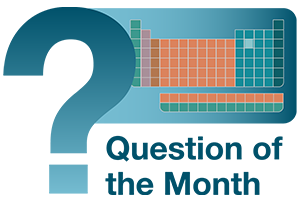
Consumers are making the move to renewable energy, however, there is still a lot of dependence on fossil fuels. Take the poll and in the Comments section, let us know what you think can be done to make the shift to renewable energy easier.

Consumers are making the move to renewable energy, however, there is still a lot of dependence on fossil fuels. Take the poll and in the Comments section, let us know what you think can be done to make the shift to renewable energy easier.
The only way to achieve renewable energy is by not impacting the earth to the point that it can't renew itself if we take more then we need or if the processes to make those energy sources takes more then it gives its not Renewable. Cooperation for a solution can't be marginal it has to be profound everyone from company to consumer has to realize their impact. Tesla said it the earth is the ultimate source energy "a giant capacitor" greed and control among other things limits our view of potential.
in Australia we mine megatonnes of coal to sell to the world market. We thus indirectly shoot ourselves in the feet.The CO2 still gets into the atmosphere and we share the outcome with those who burn it. To cut off this resource would increase coal prices and perhaps influence others to phase it out. Our puny efforts to go green are dwarfed by our coal exports.But ... the lost coal revenue and jobs is not something that the industry and governments care to think about. There is some hope perhaps that nature somehow be a bit compassionate, turn down The Sun and deliver us a convenient frame in which to wind back our emissions!
The biggest barrier to moving to use more renewable energy sources can vary by region and context, but some common barriers include:
1. **Cost**: The initial investment in renewable energy infrastructure can be high, although long-term operational costs are often lower.
2. **Intermittency**: Many renewable sources, like wind and solar, are intermittent, making it challenging to maintain a consistent energy supply.
3. **Infrastructure and Grid Limitations**: Existing energy infrastructure may not support the integration of renewable sources, and grid upgrades are often needed.
4. **Policy and Regulation**: Inconsistent or unfavorable government policies and regulations can hinder renewable energy adoption.
5. **Public Perception**: Misconceptions and resistance from the public can slow down renewable energy projects.
6. **Technological Limitations**: Some regions lack access to advanced renewable energy technologies.
7. **Storage Challenges**: Effective energy storage solutions for renewable sources are still evolving.
The significance of these barriers varies depending on the specific context and location.
There are always better solutions just around the corner. So why waste money on, say, today's solar panels when there will be far more efficient, self-regulating, everlasting, brick-shaped versions impervious to squirrels once installed in a house wall, at a fiver each, available from every D-I-Y store in the country tomorrow?
As for EV's - don't get me started....
Glad to hear incandescent bulbs are still available! Without them, how am I supposed to check the speed of my record deck?
I have several LED bulbs that run hot, so much so that I have to wait for them to cool down before extracting them. I guess this is because of the 230V available, 225V of it has to be dumped somewhere to prevent destruction of the LEDs. I've ignored RMS etc to keep this short, I'm running late as it is...
They don't really work like that. Mains powered bulbs containing a small number of LEDs use some kind of switching regulator to convert rectified mains to a suitable voltage to power the LEDs. These regulators are often not very reliable (being built from very cheap parts) but are reasonable efficient.
MK
Hi michaelkellett, thanks for the reply. I know that most use switching regulators these days, and some LED bulbs run at quite low temperatures. But others do not, and I wonder where all the excessive heat comes from. Something, somewhere, is being over-driven. Maybe the thyristors or triacs are not being switched fast enough.
I also have some where the incoming AC is split so that a chain of LEDs light up during one half-cycle and the other chain on the other half-cycle. When they go a bit dim, it usually means that one of the chains has overheated just a little bit too much.
LED room-lighting is not popular with photographers. Digital cameras can get quite upset by the spikey nature of switch-mode light.
Glad to hear incandescent bulbs are still available! Without them, how am I supposed to check the speed of my record deck?
DIY LED Stroboscope to Check Turntable Speed
What a time to be alive